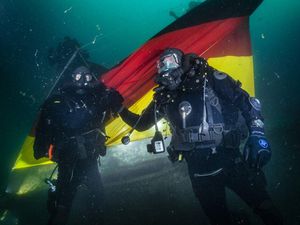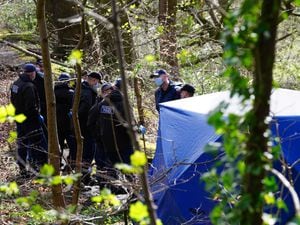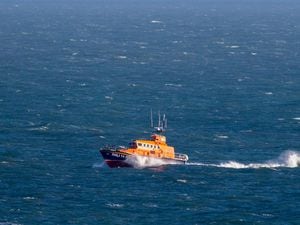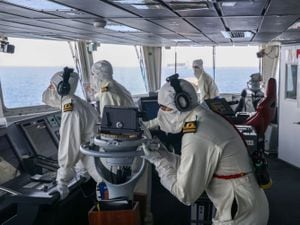Scuttling of German fleet in Scapa Flow 100 years ago commemorated
A Royal Navy diver shook hands with a German counterpart underwater after laying wreaths at the battleship Dresden.

A service has been held in waters off Orkney to mark 100 years since the scuttling of more than 50 German ships after seven months of incarceration.
Hundreds attended commemorations on Friday in remembrance of those who lost their lives as a result of the incident in Scapa Flow on June 21 1919.
A wreath was thrown out to the Gutter Sound at the site of the wreckage of German battleship Dresden, while a Royal Navy diver and German counterpart went underwater to lay wreaths, followed by a shaking of hands between them.

>Wreaths laid at the bow on the Dresden after the ceremony (Marjo Tynkkynen/PA)
Dignitaries and descendants of those involved with the Scapa Flow scuttling were among those at services to mark the centenary of the event.
A total of 52 of the interned vessels sank and many men were injured – nine fatally. It was to be one of the final acts of the First World War.
Colonel Dietmar Werstler, representing the German War Graves Commission, said: “Remembrance ceremonies and remembrance culture is something that has an all-time importance.
“It tells our generation and the next generation that the principles and values of human dignity, of human rights, are something that needs to be guarded and needs to be taken care of.”
Children on a school trip aboard the Flying Kestrel were coincidentally in Scapa Flow at the time of the scuttling.
Craig Spence was attending the service as grandson of Fred Groundwater, who was nine when he witnessed the event.
The 42-year-old, of Kirkwall, said: “He talked about going out on the truck with all his classmates and the excitement that they all had about going out on the boat to see the fleet.
“He also talked with great enthusiasm about the excitement all the children had when the boats started moving around in the water.
“But he also told us about the panic on the teachers’ faces and how they were all scurrying about.”
The German High Seas Fleet was interned in Scapa Flow following Armistice in November 1918 while negotiations for the Treaty of Versailles were ongoing.
Rear Admiral Ludwig von Reuter was in command of the 74 vessels – viewed as a threat to the UK’s dominance at sea – but had not been informed of a last-minute extension to finalise details of the deal.
He did not want the assets shared among foreign powers without the German government’s consent and was struggling with a mutinous, embarrassed and increasingly bored crew.
With the previous deadline for a treaty passed, he issued an order to scuttle the ships.
The admiral was made a prisoner of war but his act of defiance was celebrated in Germany.
His grandson, Yorck-Ludwig von Reuter, rang a bell from the German naval association in commemoration of those who lost their lives in the scuttling.
He said: “After 100 years, to come together, it really is a fine gesture.”
Another service was held at Lyness Royal Naval Cemetery on Hoy, where victims of the High Seas Fleet scuttling aftermath are buried.
Religious and military figures from both nations gave readings, while music was performed by children and naval musicians.
The total number of German burials from the time of interment and imprisonment during that period in Scapa Flow is 13.
Historian Nick Jellicoe described the scene at the time as “chaos, absolute pandemonium”.
Mr Jellicoe said: “Eight solders had been shot, some shot by rifle fire, but one has to put this down to the panic – the sheer panic – of the moment.
“They didn’t know how to stop this, maybe it was frustration and anger that added to this, but it was a pretty reprehensible act.
“They were shot under the white flag – that should never happen.”





